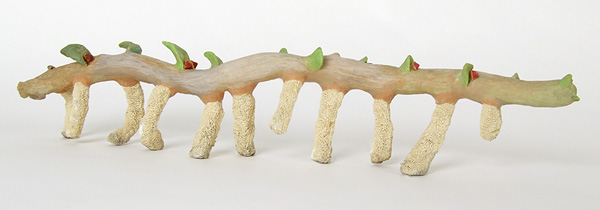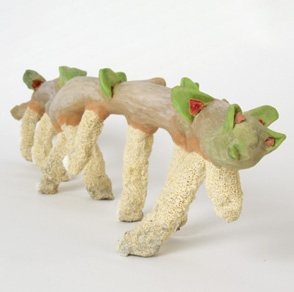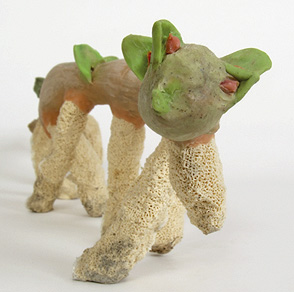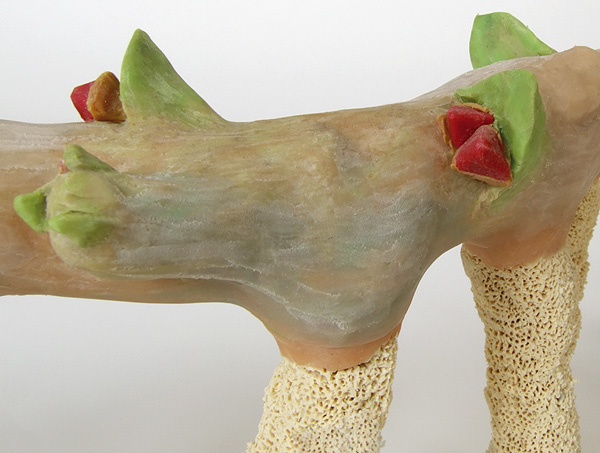schlanker schlangenförmiger reisender
slim snake-shaped travelling one




der organismus bildet ausläufer (rhizomstolone) aus. sie treten als oberirdisch sowie unterirdisch kriechende, verlängerte seitensprosse des organismus auf, die der basis (stirps) entspringen. sie dienen der asexuellen vermehrung des organismus und sind eine form der vegetativen ausbreitung durch selbstausläufer (blastochorie). an den so genannten nodien der ausläufer können sich wurzeln und aufrecht wachsende triebe entwickeln. wenn ihre verbindenden sprosse zusammenbleiben, bildet sich ein über mehrere kilometer ausbreitendes netz. einzelne verbindungen können aber auch absterben. so entstehen unabhängige, wenn auch genetisch mit der ausgangslebensform identische wesen. viator leptophis ist an seinen wurzelrhizomen dicht behaart, hingegen am ausläufer und dessen blattförmigen extremitäten nackt.
the organism viator leptophis develops extensions (rhizome stolons) on the surface and subterrestrial extensions as creeping, extended side sprouts of the organism, which start at the base (stirps). they serve for vegetative (non-sexual) reproduction and spreading of the organism and are a form of blastochory. at the so-called nodiae of the extensions, roots and upwardly growing sprouts can develop. if the connecting sprouts remain together, a network of extensions develops, which covers several kilometers. single connections might also die. in this way, independent creatures come into existence, which are still genetically identical with the original life-form. viator leptophis has hairy rootstocks and is naked at the sprout with its leaf-shaped extremities.

